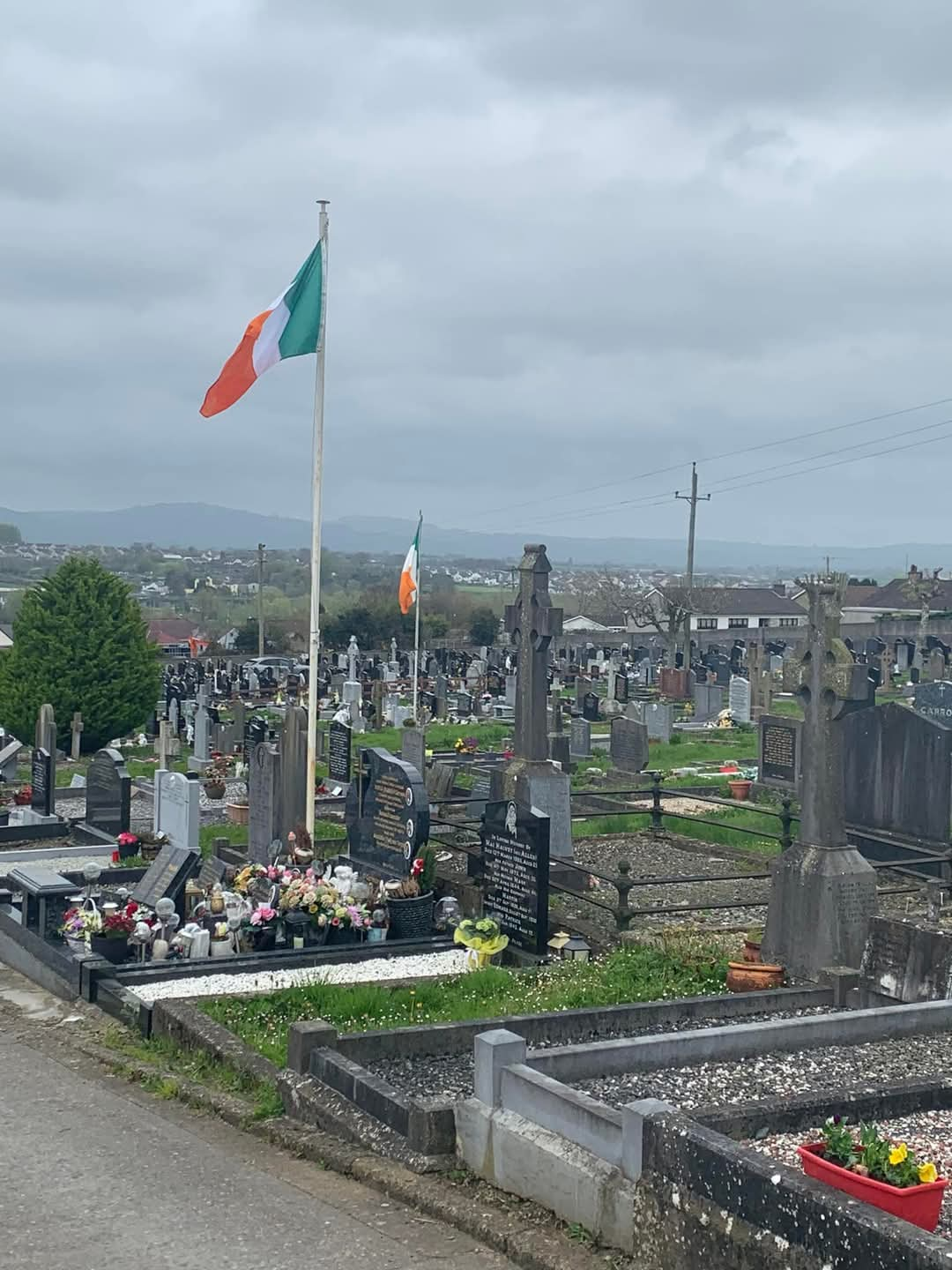Remembering those fallen men at Easter
All around the country on Easter weekend crowds gather at republican graves or at special memorials to remember those who gave the ultimate sacrifice for their country. Carrick-on-Suir is no different and each year a dignified and respectful event is held at the republican plot in St. Mary’s Graveyard. The local Sinn Féin Cumann lays a wreath to remember the fallen and the 1916 Proclamation of Independence is read aloud, every Easter Sunday morning before heading down the road to Portlaw for their annual march and commemoration through “The Tannery Town”.

But just who are those interred in the plot that is adorned by fresh tricoloured ribbons every year while the national flag flutters high above on a gleaming flag pole? The story of the three interred in Saint Mary’s gives a fascinating, if somewhat macabre insight into our sad past. The three IRA men are Patrick O’Hanlon who died in 1923, James Torpey who did in 1922 and Patrick Butler who passed in 1922 also.
The story of these three men is so much more than the engraved names and dates on a headstone.
Patrick Butler lost his young life when a mine that he was planting along with two other volunteers Vol. James O’Meara and Vol. Jeremiah Riggs exploded prematurely in an area called Kingswell which is north of Tipperary town. Butler was from Ballinagrana, a towns land between Cahir and Cashel. It would seem that the explosion occurred in July 1922 but the volunteers death was not registered.
James Torpey was a local lad, and to this day has many, many relatives living in the town. Born in November 1903 Torpey was a young man at the time of his death, but he was a brave soldier up until the end. Having blown up the old bridge Torpey and his battalion failed to blow up the new bridge and thus were chased down by pro treaty forces. Torpey was shot dead just yards from his own home on Cul Na Muc. At the time of his death the parish priest, Fr. Ormonde was fervently against the republican movement and the Torpey family made their feelings known about his preaching from the pulpit at James’ funeral.
Patrick O’Hanlon was also a man who has plenty of descendants in the community. He lived on Greenside and had a job as a telegram boy and at such a young age was without suspicion as he travelled the town carrying out his work. The town was under free state control at the time and a raid by anti-treaty forces gathered arms and documents that were hid in the Millvale area but their location was discovered.
O’Hanlon was imprisoned at first in Clonmel for his role in the raid, and was then interred without trial in Kilkenny where, on 3rd September, 1923 he was shot in the leg, according to his family while reading a letter penned by his mother. Patrick died the following day in The Curragh Military Camp.
The final resting place of these three volunteers speaks of a dark time in history, when post-colonial civil war waged and pitted brother against brother. In the words of George Santayana “Those who cannot remember the past are condemned to repeat it”.